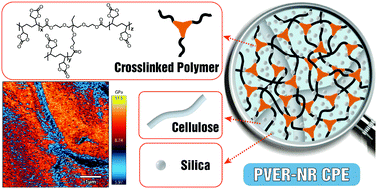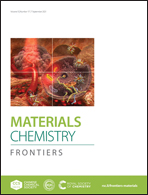Silica-nanoresin crosslinked composite polymer electrolyte for ambient-temperature all-solid-state lithium batteries†
Abstract
All-solid-state lithium batteries (ASSLBs) are in urgent demand for future energy storage. The basic problems are, however, low ambient-temperature ionic conductivity and narrow electrochemical windows of solid electrolytes as well as the abrupt lithium dendrite growth causing short-circuit. Herein, we demonstrate a novel poly(vinyl ethylene carbonate) based crosslinked composite polymer electrolyte (PVEC-NR20 CPE) with 20 wt% silica-nanoresin (NR) consisting of a nano-silica filler and trifunctional crosslinker. This electrolyte displays a high ionic conductivity of 1.65 × 10−4 S cm−1, a wide electrochemical window up to 5.3 V versus Li+/Li and a large lithium-ion transference number of 0.63 at 25 °C. Moreover, the resulting electrolyte membrane possesses a significantly high modulus of more than 6 GPa, which enables the suppression of lithium dendrite growth during repeated Li stripping/plating. The high-voltage all-solid-state NCM523/Li cells with the PVEC-NR20 CPE possess an outstanding rate performance (95.0 mA h g−1 at 2C) and cycling stability (79.4% after 200 cycles at 0.5C) at 25 °C. This work offers a new approach towards future high-voltage and ambient-temperature all-solid-state lithium batteries.

- This article is part of the themed collection: 2021 Materials Chemistry Frontiers HOT articles


 Please wait while we load your content...
Please wait while we load your content...